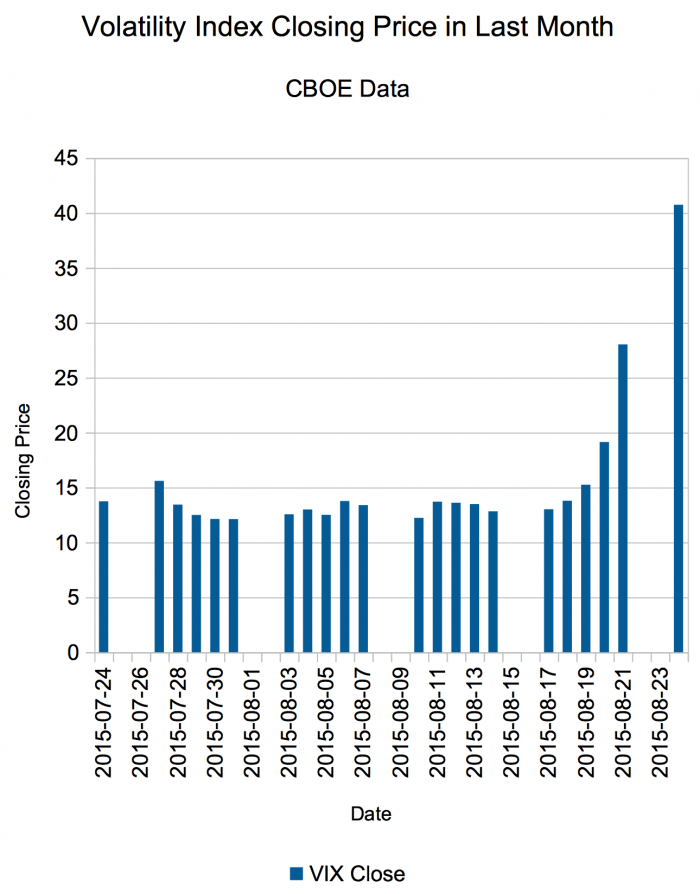One thing to notice about the recent turmoil in the American stock markets is how quickly volatility can pop up out of seemingly nowhere.
Let me back up: volatility, loosely defined, is an adjective applied to things which change quickly and often without warning. It has made its way into many advanced fields - in chemistry, it refers to how quickly something becomes a gas, in computer science it refers to memory which may be changing outside of the purview of a program, and in finance it refers to the movement of prices of some asset. Perhaps I'll do a further article on the idea (in finance, at least), but when you hear "volatility" in American finance, roughly 73.24% of the time people are referring to the implied volatility on the S&P 500 index - a measure which is tracked by the Chicago Board Options Exchange.
In short, watching implied volatility is watching how uncertain traders and market participants are of the price of the S&P 500 index at some point in the near future - lower prices mean "we are relatively certain it will trade around this price", while larger and larger volatility readings mean "haha, we have no clue".
And Your Point?
You should know that it's been an in-vogue trade for various (technical) reasons in the recent past - 'selling' volatility with the way options contracts are constructed means that you can pocket a premium every month in 'normal' markets. However, when volatility changes quickly, premiums are a pittance - and may even reverse.
Ignoring how volatility is calculated, know that it has gone from 13 to 40 in under a month. Since most retail investors are selling volatility short (see our, of all things, 2014 stock market contest entry on short VIX for details), that means those investors/gamblers just lost a ton of money incredibly quickly. Let's go to the tape:
And what if you just started shorting it on the 17th? What's that loss... annualized?
Nickels In Front of Steamrollers
We don't have a ton of data to work off, but volatility sitting in the 10-15 range is historically low from what we do know. That means anyone shorting volatility was betting only on VIX staying in contango, since there isn't much room for VIX to fall much further. Think of it like selling flood insurance to California with an El Niño brewing years after the last time California saw rain... and after the ground dried up and all the plants died. Yeah, you can make a few dollars, but you'll get smoked if that risk is mispriced. And, yeah, that risk was mispriced.
And that's what you're seeing here - for all the talk about 9% drops in the S&P 500 in a week (but you set your portfolio long ago, so you can weather this El Niño, right?), it's the too-clever-by-half investors who forgot how quickly the weather can change that will be dealing with the storm.
Surely there is a time to sell flood insurance (and, hey, VIX at 40 is pretty high!), but this is just another reminder that for the vast majority of investors (your host, mostly, as well)... you're better off passively investing in index funds.
Don't you agree?

